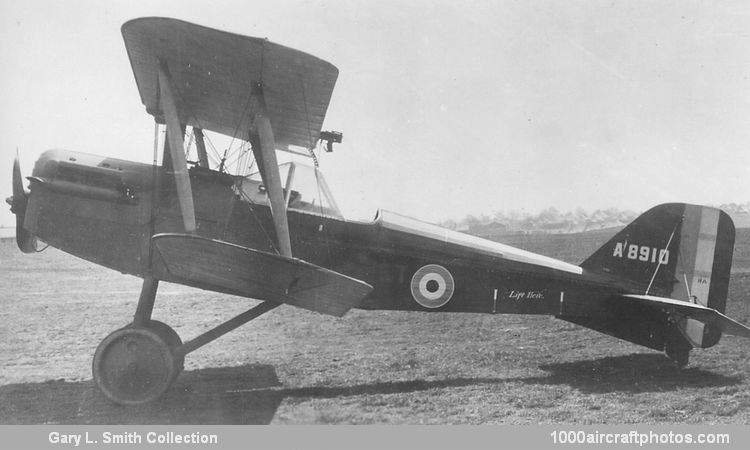12/15/2017. Remarks by Johan Visschedijk: "Second only to the Sopwith Camel in reputation as the RFC's outstanding fighter of WW I, the S.E.5 was designed under the direction of H.P. Folland. Of classic tractor biplane configuration, the S.E.5 was initiated to take advantage of the new Hispano-Suiza engine that began test-running in Spain in February 1915 and was in production in France a few weeks later. Two versions of the engine became available during 1916, the basic direct-drive 150 hp unit and a geared version producing 200 hp. Examples of both were included in the British orders placed in France and, subsequently, with Wolseley for license-built examples (as the 150 hp Python and 200 hp Adder respectively).
The S.E.5 was intended, from the outset, to be powered by the 200 hp geared engine and to be armed with a 0.303 in (7.7 mrn) Lewis machine gun firing through a hollow propeller shaft, but, in the event, early aircraft had to use the 150 hp Hispano 8Aa, and had an armament of a Vickers gun in the front fuselage, offset to port, with interrupter gear, and a Lewis on a Foster mount above the center section. Unarmed, the first of three prototypes of the S.E.5 flew on November 22, 1916. It was a compact single-bay biplane with equi-span wings featuring raked tips, a similarly-raked tail plane, triangular fin and almost rectangular rudder, with a small ventral fin and a V-strut landing gear. A large windscreen was provided over the front of the cockpit. All major components were of conventional wood construction, with fabric covering.
Of two further prototypes, one was similarly powered and first flew on December 4, 1916, whereas the other introduced the 200 hp engine and became, effectively, the prototype for the S.E.5a. Production of the S.E.5 was ordered "off the drawing board" with a first batch of 24 built by the Royal Aircraft Factory at Farnborough, where the first was completed in March 1917. A second batch of fifty followed on, but at least fifteen of these were to emerge as S.E.5a's, and some S.E.5s in service were also modified to have 200 hp engines. In service with the RFC in France by early 1917, production S.E.5s were modified in various ways, particularly by removal of the windscreen. Other changes tried out on S.E.5s to improve the lateral control were consolidated in the S.E.5a."
